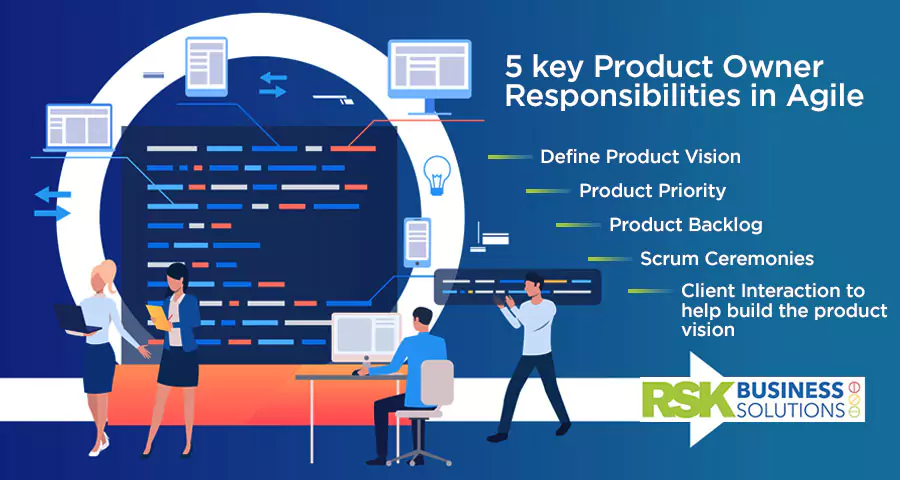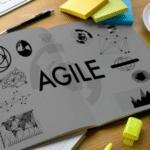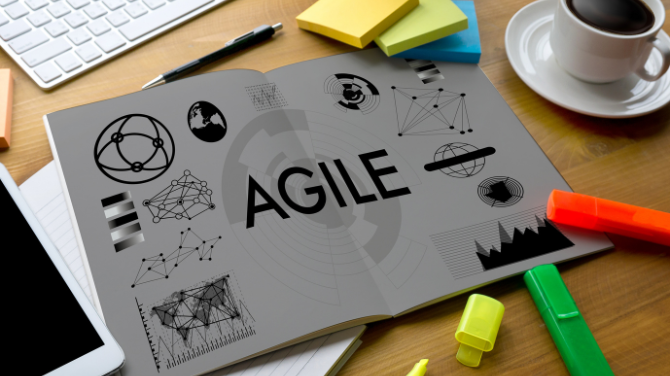
Related Articles

IT Outsourcing
RSK BSL Tech Team
May 4, 2025
|
|

Mobile Application Development
RSK BSL Tech Team
April 30, 2025
|
|

Software Development
RSK BSL Tech Team
April 27, 2025
|
|

Hire resources
RSK BSL Tech Team
April 24, 2025
|
|

Software Development
Praveen Joshi
April 20, 2025
|
|

Artificial Intelligence
Praveen Joshi
April 17, 2025
|
|

Pen Testing
Praveen Joshi
April 15, 2025
|
|

AI Tech Solutions
RSK BSL Tech Team
April 14, 2025
|
|

Software Development
RSK BSL Tech Team
April 9, 2025
|
|

Pen Testing
RSK BSL Tech Team
April 7, 2025
|
|

Software Development
RSK BSL Tech Team
April 3, 2025
|
|

Cloud Application
RSK BSL Tech Team
March 31, 2025
|
|

Pen Testing
Praveen Joshi
March 27, 2025
|
|

Software Development
RSK BSL Tech Team
March 25, 2025
|
|

Software Development
RSK BSL Tech Team
March 20, 2025
|
|

Software Development
RSK BSL Tech Team
March 18, 2025
|
5 key Product Owner Responsibilities in Agile
One of the most important things that a product owner does is to give a detailed representation of the customer needs to the development team. Whether you are an agile software development in healthcare or any other industry, your product owner will be amongst your project’s key stakeholders. Part of what a product owner has is a vision of the product that they want the development team to build and then relaying that vision to the team. It is essential to successfully develop any bespoke software in the UK using the agile methodology.
The product owner is usually someone who is one of the lead users of the system or someone with product management or marketing background. This professional has an in-depth understanding of the competitors, future trends, marketplace, and users for the software that is being developed by the scrum team. So to perform their responsibilities, product owners don different hats, including that of a business analyst, market analyst, project manager, product designer, and others. It won’t be wrong to say that product owners are an integral part of the scrum team or they complement each other to get the job done right at every time of asking.
Let us now see the critical responsibilities that agile product owners fulfil:
● Define Product Vision: The product owner is the go-to person for everyone in the development team and even beyond – clients and other stakeholders. They use their market, business, and product perspectives to define the vision of different development projects.
● Product Priority: This is again very important. The product owner may be required to juggle between time, scope, and budget to weigh priorities taking into account the objectives and needs of the critical stakeholders of the project. If the product that is currently under development has to go out in the market in the next six months. The product will have to look at aspects or elements of the product that are more flexible than others. It will help the product owner understand when and how different factors and iterations will be developed.
● Product Backlog: The product backlog is the to-do list for the development team, which is managed by the product owner. The product owner needs to list these backlog items in a way that the development team takes on those tasks first that is more important considering business strategy and goals. The product owner also maps out product dependencies to define the development sequence.
● Scrum Ceremonies: Scrum ceremonies do not help product owners to better interact with the scrum master and development team but also adapt and inspect. Scrum ceremonies are essential because product owners can use these meetings to let the development team know of the priorities and understand the impediments that are hampering the team’s performance.
● Client Interaction to help build the product vision: They communicate with different stakeholders, including the clients, development team, and business managers, to ensure that the idea is clear and in line with business objectives.
Conclusion
Product owners are an indispensable part of a product development team. Amongst their most important responsibilities is to strike a successful working relationship with the scrum master and the scrum team to ensure timely delivery of projects.
Praveen Joshi
Praveen is a seasoned IT Solutions Leader and Director at RSK Business Solutions, a technology-driven IT Consulting Company that specializes in Bespoke Software Development, Agile Consulting, Mobile App Development, Smart Sourcing, and much more. For the last 17 years, he has been delivering quality custom IT solutions that help businesses achieve their goals.

 Share
Share Post
Post Tweet
Tweet Copy
Copy


